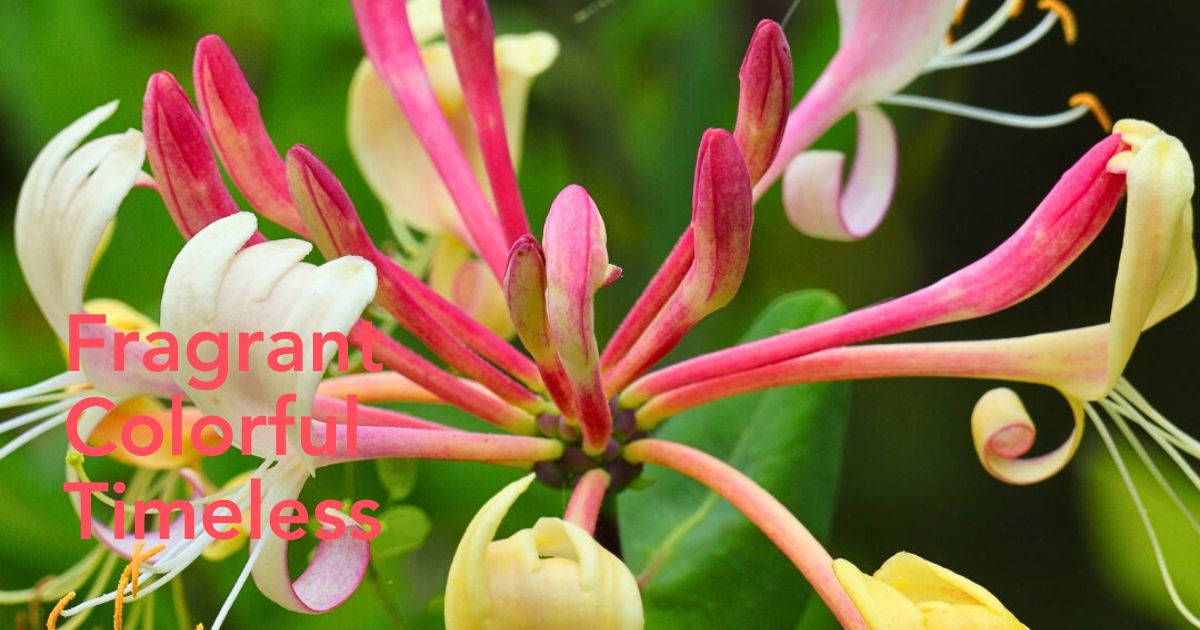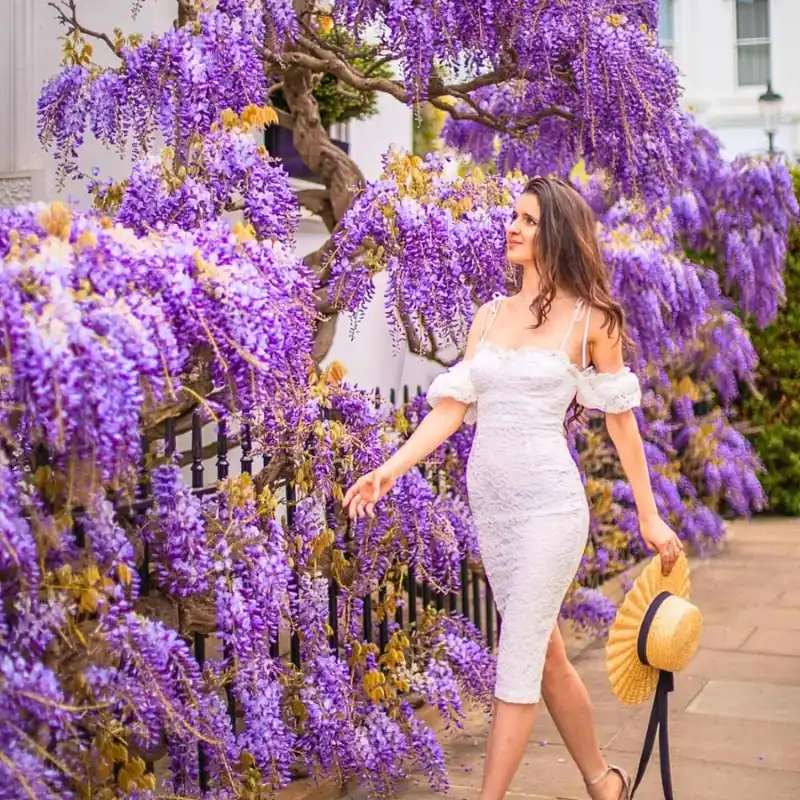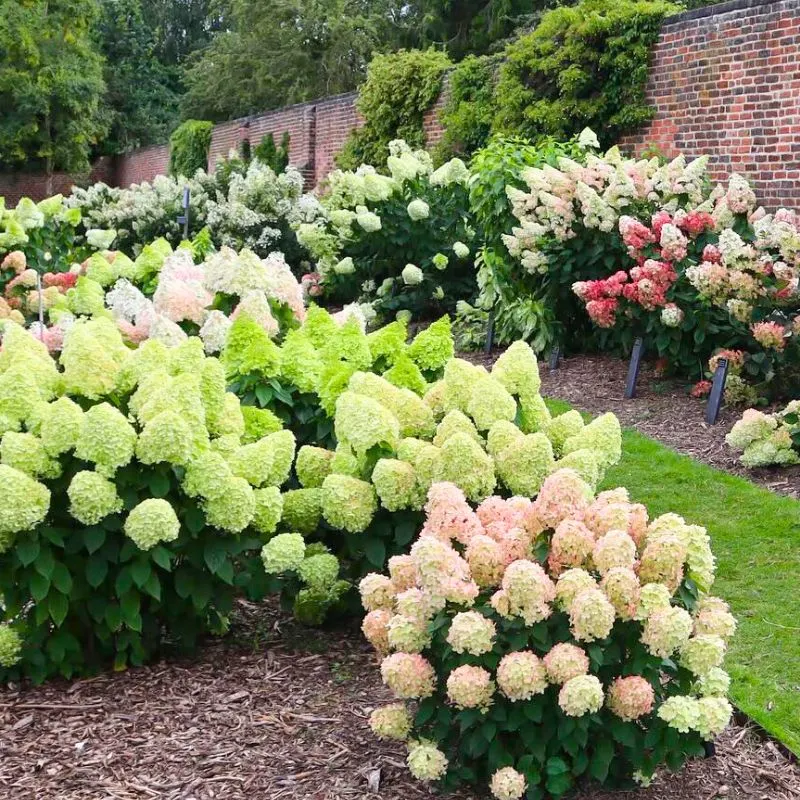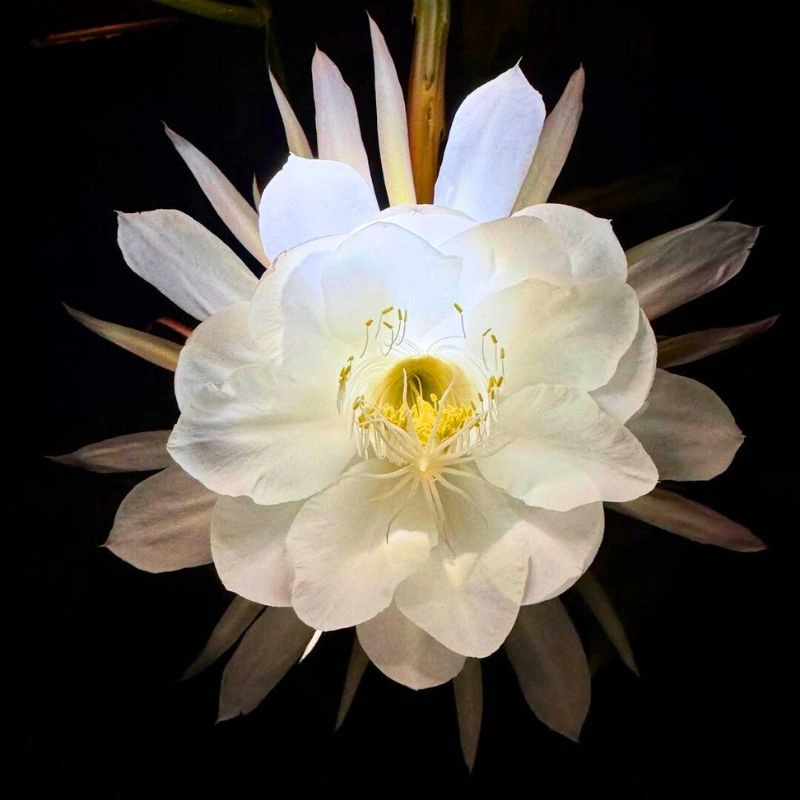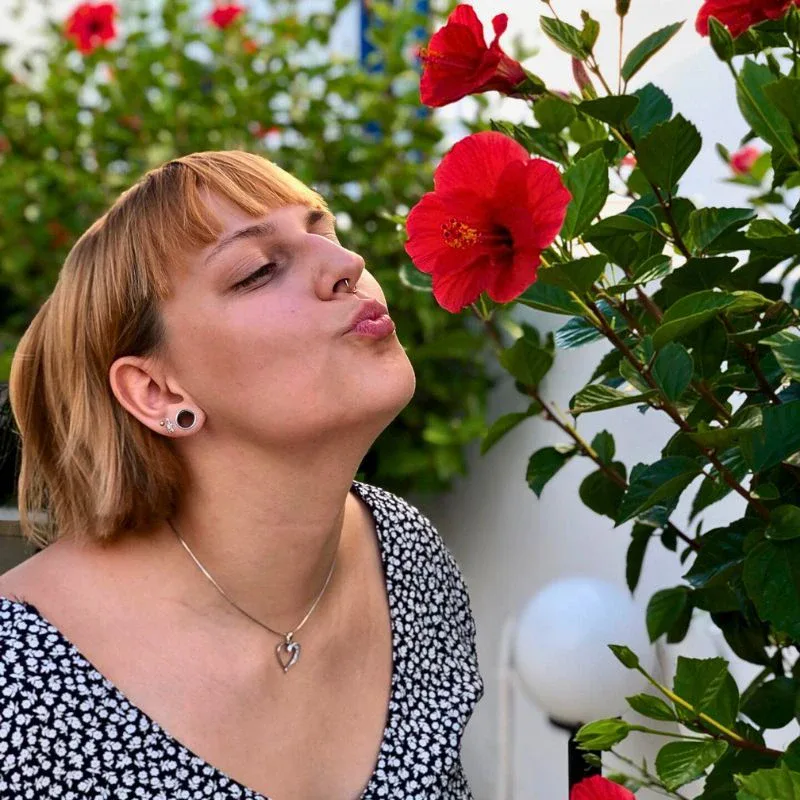The honeysuckle flower, with its enchanting fragrance and delicately twining vines, is one of the most beloved flowers in gardens and folklore alike. Known scientifically as Lonicera, this flower is more than just a visual delight—it carries a wealth of symbolism, medicinal value, and cultural history.
As one of the June birth month flowers, along with the rose, honeysuckle symbolizes love, happiness, and devotion. Its sweet scent and colorful petals have made it a favorite in gardens, bouquets, and traditional medicine for centuries. In this comprehensive article, we explore the meaning, types, uses, and cultural relevance of the honeysuckle flower.
Botanical Characteristics of Honeysuckle
Honeysuckle belongs to the Caprifoliaceae family and encompasses around 180 different species native to the Northern Hemisphere, particularly in North America, Europe, and Asia. These perennial climbers or shrubs are easily recognizable by their tubular, often two-lipped flowers that bloom in pairs.
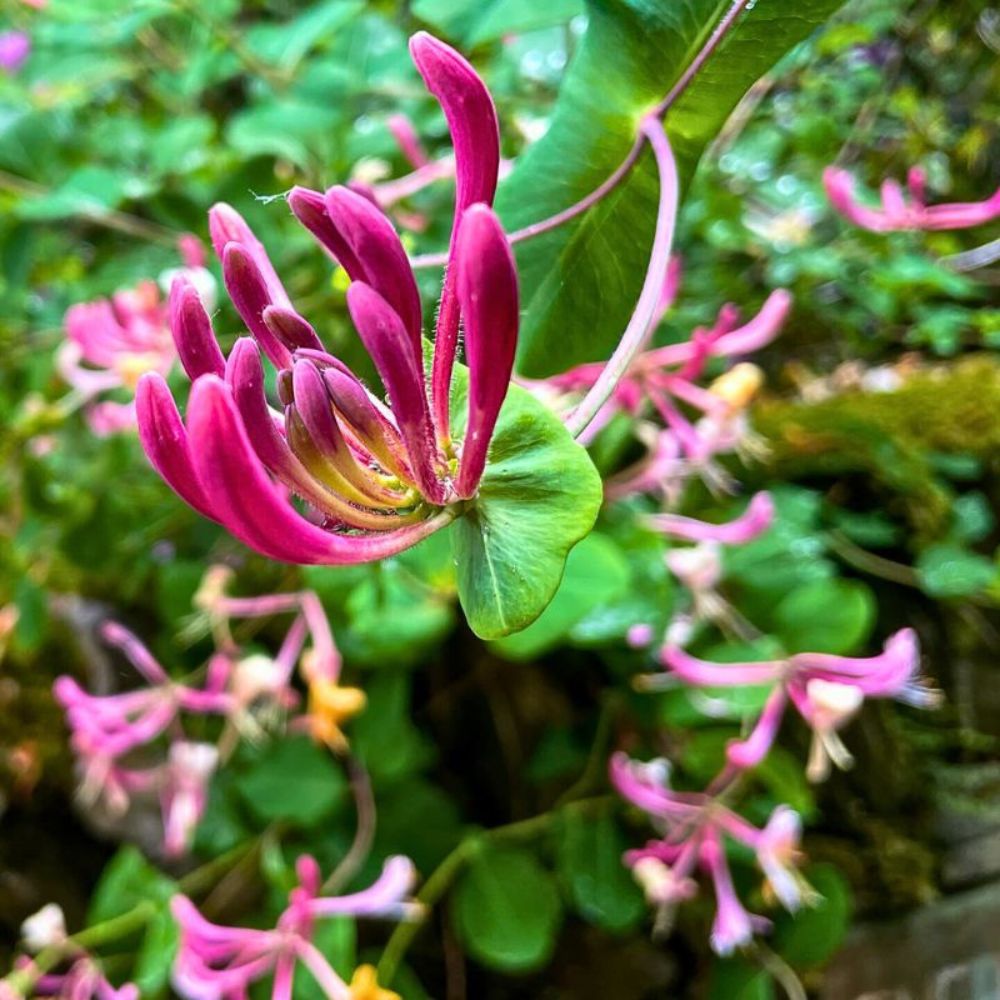
The flowers produce a rich, sweet nectar that not only pleases human senses but also attracts pollinators like hummingbirds, butterflies, and moths. This makes honeysuckle a popular addition to pollinator-friendly gardens. The leaves are simple, opposite, and sometimes fused at the base, while the plant’s twining growth habit allows it to climb fences, trellises, and other structures with ease.
Honeysuckle flowers vary in color—white, pink, yellow, and red are common—and each hue can convey a different symbolic meaning. Additionally, the plant is known for its fast growth, making it a practical choice for ground cover or privacy screens.
Symbolism of the Honeysuckle Flower
The symbolism of honeysuckle has evolved across cultures and historical periods, but certain themes remain consistent: love, affection, loyalty, and spiritual connection.
In Western traditions, honeysuckle is often associated with the bonds of love. Its clinging vines symbolize the idea of two souls intertwined, and it’s frequently used to express deep affection or enduring romantic love. The Victorians, famous for using the language of flowers to convey emotions, often included honeysuckle in bouquets to express lasting devotion.

In spiritual symbolism, honeysuckle represents intuition and psychic awareness. Some believe its scent has the power to open the mind to higher truths and bring about spiritual clarity. In Celtic folklore, honeysuckle planted near the home was said to bring good luck and protect against evil spirits.
Honeysuckle in Historical and Cultural Context
Across continents and centuries, honeysuckle has appeared in various traditions, art, and literature. In ancient Chinese medicine, the flower (known as jin yin hua, meaning "gold silver flower") is renowned for its healing properties. It has been used for thousands of years to treat fever, colds, and inflammation.
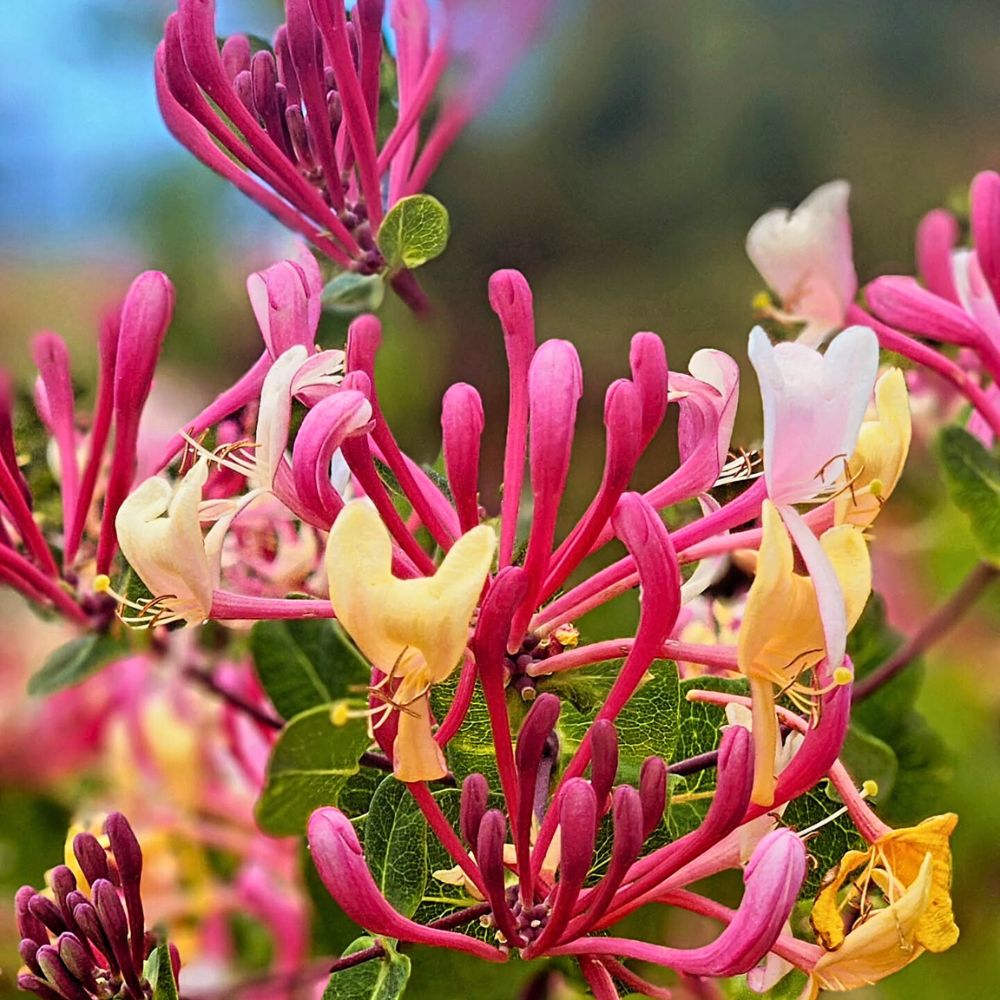
During the Victorian era, honeysuckle was not only admired for its aesthetic but also for its emotional resonance. It frequently adorned gardens and was used in wedding floral arrangements to symbolize everlasting bonds and fidelity.
In literature, honeysuckle often appears as a metaphor for sweetness, nostalgia, and passion. Shakespeare referenced it in several works, including A Midsummer Night’s Dream, using it to evoke the imagery of summer love and gentle affection.
Types of Honeysuckle
There are many species of honeysuckle, each with unique qualities and regional significance. Some of the most popular types include:

.
-
Lonicera periclymenum (Common Honeysuckle): Native to Europe, this variety is celebrated for its intense fragrance and is often seen climbing up walls and fences.
-
Lonicera japonica (Japanese Honeysuckle): Known for its resilience and fast-growing nature, this type is commonly used for erosion control but can be invasive in some regions.
-
Lonicera sempervirens (Coral Honeysuckle): native to the southeastern U.S., this non-invasive variety has bright red-orange blooms and is a favorite among hummingbirds.
-
Lonicera caerulea (Honeyberry): Grown for its edible blue fruits, this species offers both ornamental and culinary benefits.
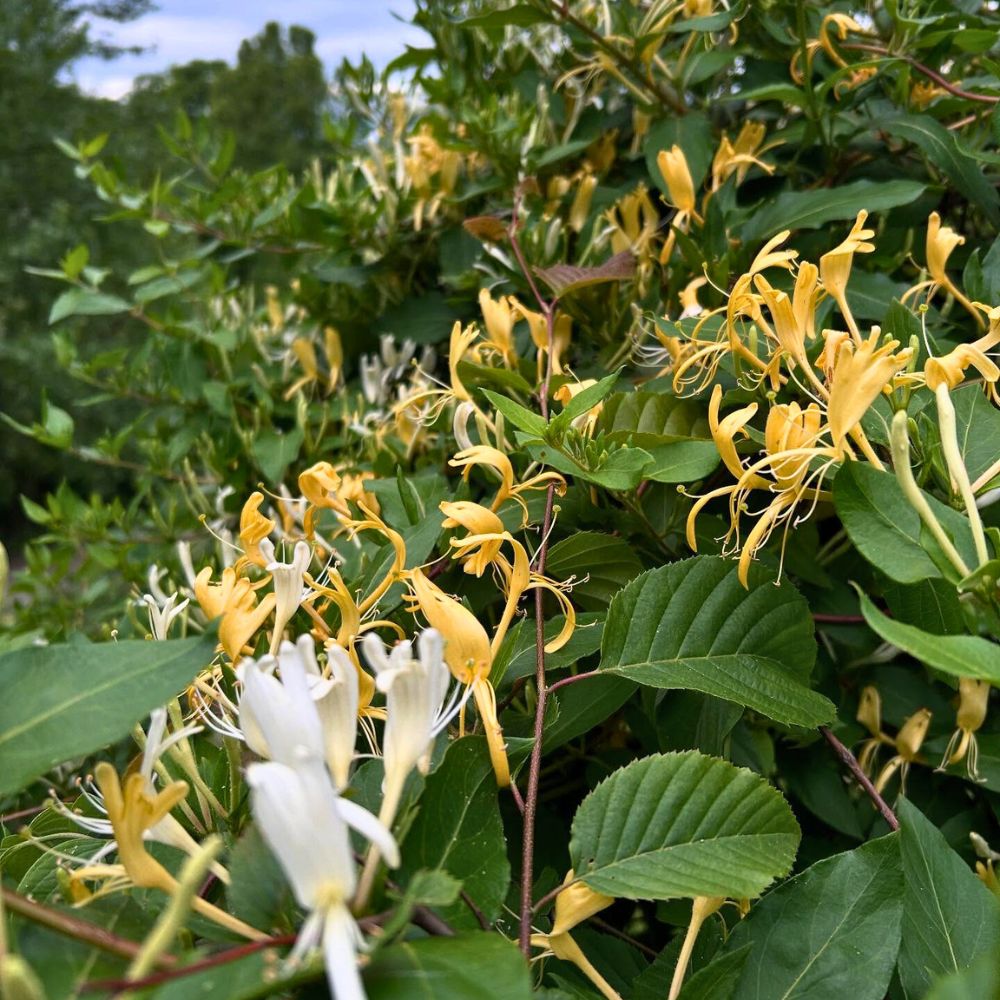
Each species contributes to the plant's rich symbolic and functional versatility, making honeysuckle an ideal choice for gardeners and herbalists alike.
Medicinal and Practical Uses of Honeysuckle
Honeysuckle has long been used in traditional medicine, particularly in Chinese and Ayurvedic practices. The flowers, leaves, and stems are employed to create infusions, tinctures, and teas.
In Traditional Chinese Medicine (TCM), honeysuckle is used to "clear heat" and detoxify the body. It’s commonly prescribed for fever, sore throat, and respiratory infections. Recent studies have confirmed its anti-inflammatory, antibacterial, and antiviral properties.
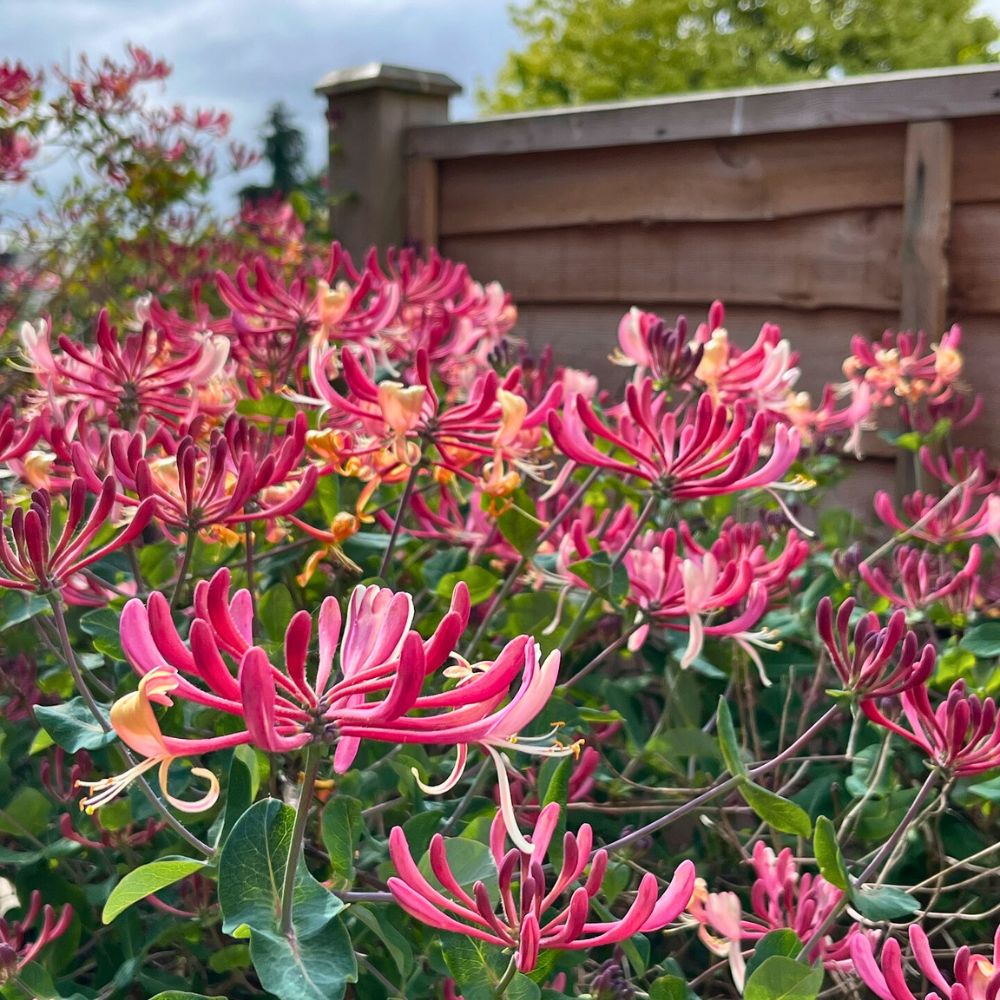
Honeysuckle’s uses extend to skin care, where it helps treat rashes and acne due to its soothing and purifying effects. The dried flowers are also used in herbal teas that promote digestion and overall well-being.
Culinarily, while the nectar is enjoyed by children and adults alike, only specific types like Lonicera caerulea produce edible berries. Others can be toxic if ingested, so identification is crucial before any culinary use.
Honeysuckle as a Garden Favorite
Honeysuckle’s beauty and utility make it a prized addition to home gardens. Its sweet scent fills the air during late spring and summer, creating a nostalgic, romantic atmosphere. Because it thrives in a variety of soils and can grow in both sun and partial shade, it’s relatively easy to cultivate.
The plant's vigorous climbing habit makes it ideal for arbors, trellises, pergolas, and fences. Gardeners also appreciate its low maintenance needs and its ability to attract pollinators, enhancing biodiversity.
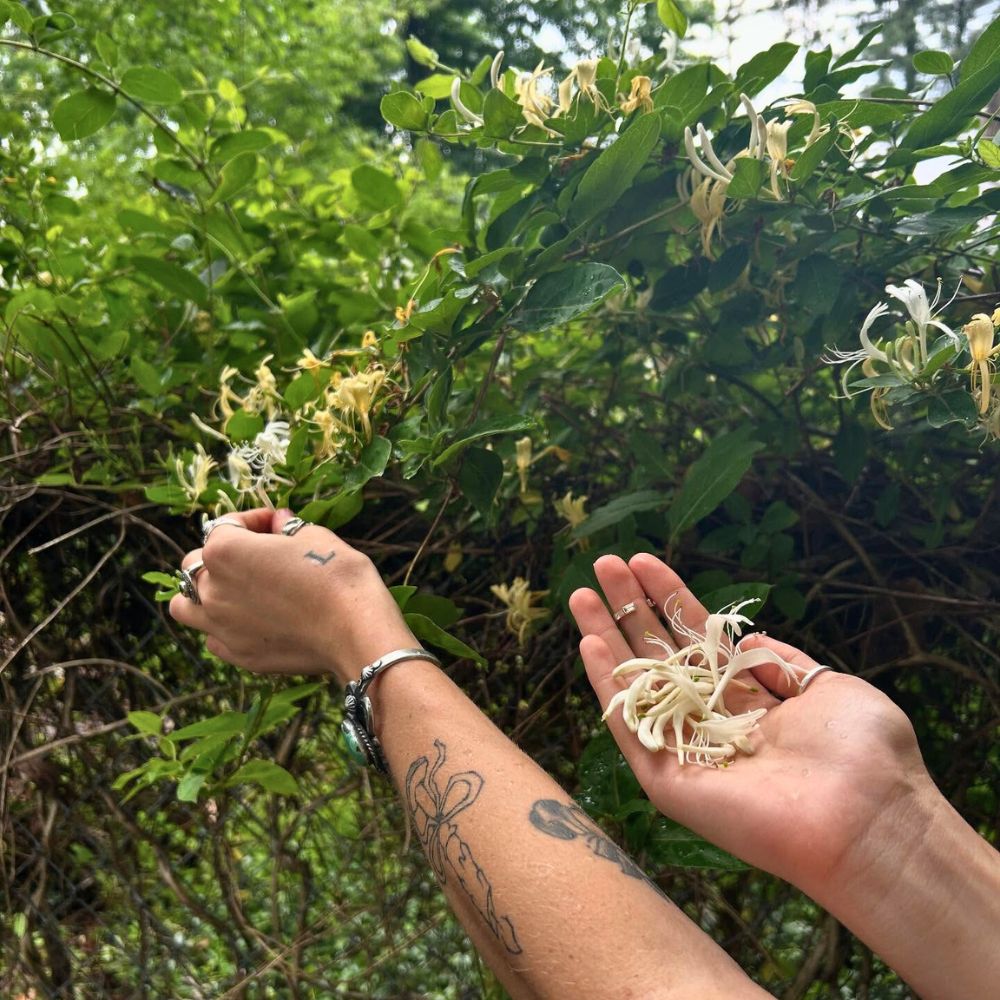
When planning a garden, incorporating honeysuckle can serve both aesthetic and ecological purposes. It provides shelter and nectar for beneficial insects and birds, while also offering a fragrant, colorful focal point.
June Birth Flower: The Meaning Behind the Month
As one of the birth flowers for June, honeysuckle carries special meaning for those born in the early days of summer. It represents the sweetness of new life, enduring bonds, and the vitality that accompanies the summer solstice.
The honeysuckle flower is often gifted in bouquets or arrangements for June birthdays. It pairs well with roses—June’s other birth flower—to create visually stunning and symbolically rich gifts.
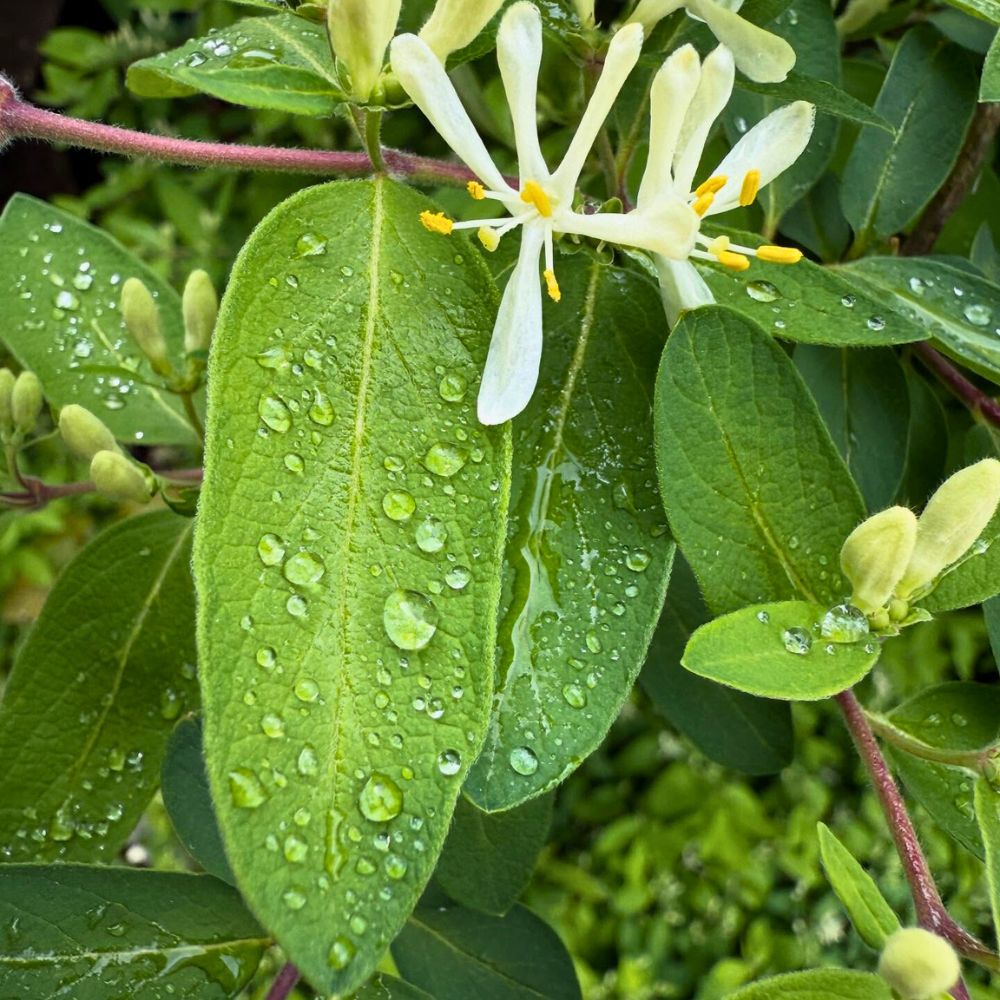
In astrological terms, honeysuckle resonates with the nurturing qualities of Cancer and the vibrant energy of Gemini, the two zodiac signs that dominate June. Its symbolism of love and connection aligns beautifully with the emotional depth and sociability associated with these signs.
Honeysuckle in Modern Culture and Products
Today, honeysuckle continues to influence various industries. It’s a popular fragrance in perfumes and scented candles, valued for its light, sweet, and nostalgic notes. In cosmetics, honeysuckle extract is prized for its soothing and anti-aging properties.
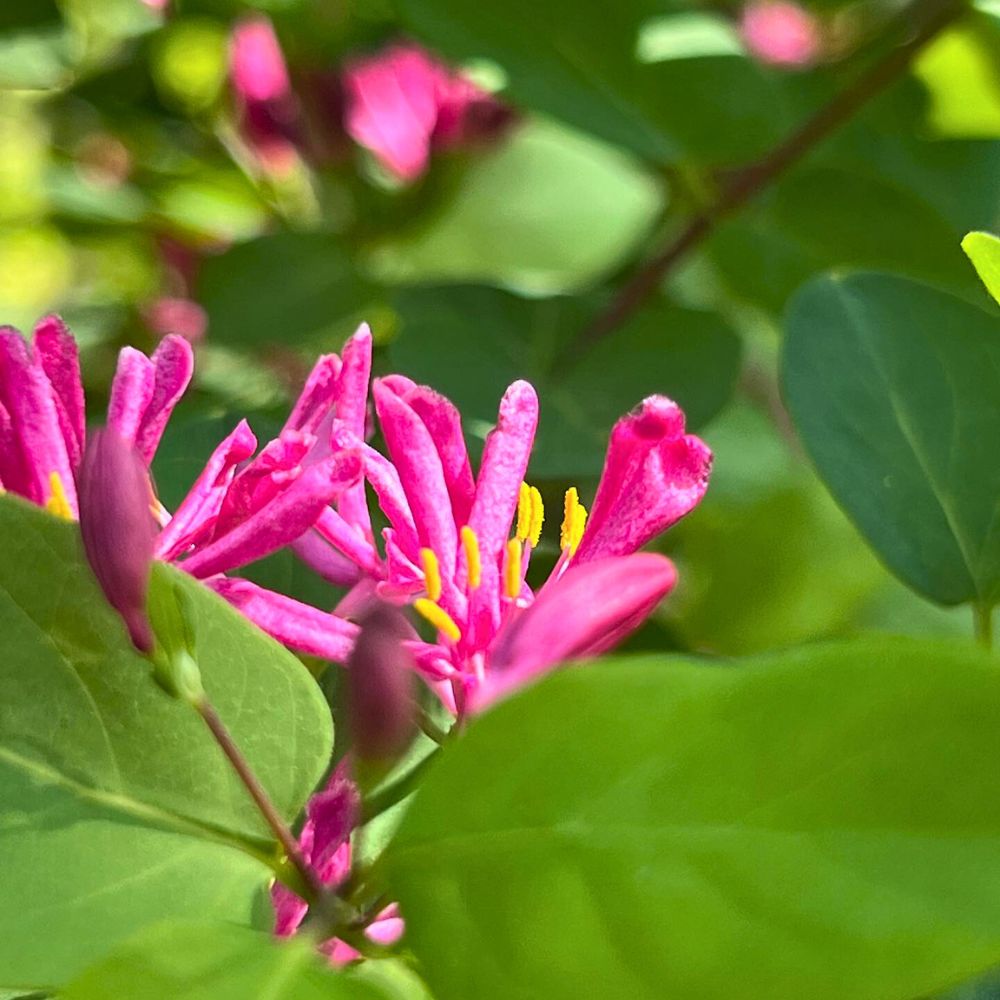
Artisans and crafters also use honeysuckle motifs in jewelry, home decor, and textiles, often drawing on its romantic and vintage connotations. Its image evokes memories of summer evenings and youthful love, making it an enduring symbol of warmth and emotional richness.
From ancient healing traditions to Victorian love letters and modern gardens, the honeysuckle flower has woven itself into the fabric of human culture and emotion. With its irresistible scent, colorful blooms, and deep symbolism, it stands as a floral ambassador of love, happiness, and devotion.
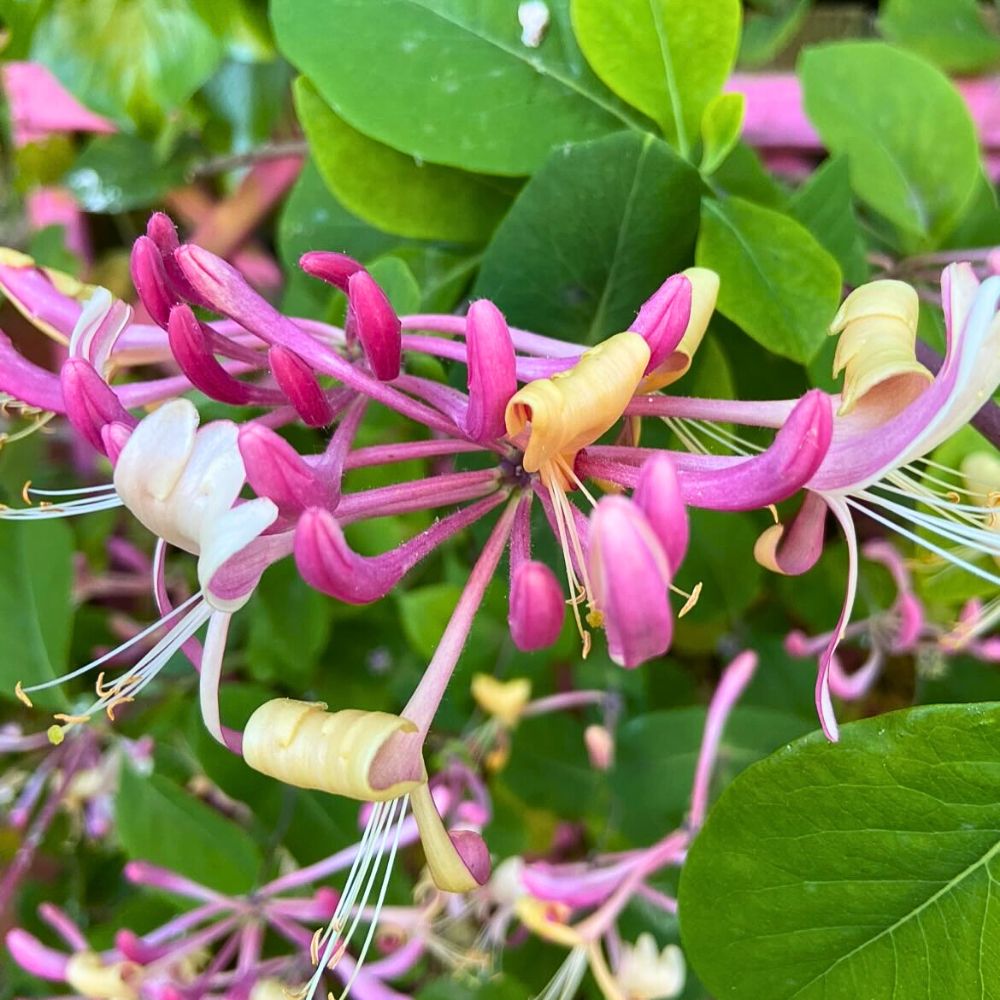
Whether you’re honoring a June birthday, planting a pollinator-friendly garden, or simply seeking a deeper understanding of nature’s language, the honeysuckle offers beauty and meaning in abundance. Its presence—both physical and symbolic—reminds us of the sweetness of connection, the joy of growth, and the timeless bond between people and the natural world.
Header and feature image by @ bernswaelz from Pixabay.

